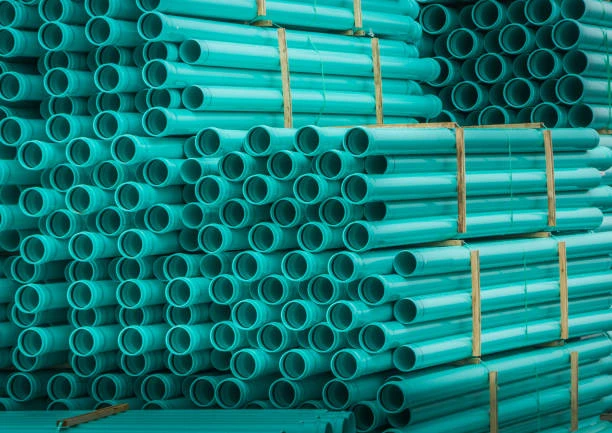Introduction: The Rise of PVC Pipe Alternatives
Polyvinyl chloride (PVC) pipes have long been a staple in construction and plumbing due to their durability, cost-effectiveness, and resistance to corrosion. However, concerns about their environmental impact and potential health hazards have sparked a search for viable alternatives. From biodegradable materials to metal composites, various substitutes for PVC pipe has emerged, promising a greener and safer future. Yet, as with any new technology, these alternatives come with their own set of risks and considerations.

Environmental Concerns with PVC Pipes
PVC pipes, while widely used, have come under scrutiny for several reasons. The production of PVC involves the use of dioxins, known carcinogens, and phthalates, which can disrupt endocrine systems. Additionally, the disposal of PVC pipes contributes to landfill accumulation and can leach harmful chemicals into soil and waterways. These environmental concerns have driven the development of alternatives like polyethylene (PE), polypropylene (PP), and bioplastics made from plant-based materials such as polylactic acid (PLA).
The Promising Alternatives: Benefits and Drawbacks
Polyethylene (PE) and Polypropylene (PP): PE and PP pipes are lighter, more flexible, and often easier to install than PVC. They also exhibit good chemical resistance and can withstand high pressures. However, both materials have a higher carbon footprint during production compared to some bio-based alternatives. Moreover, while PE and PP are recyclable, their recycling rates lag behind PVC due to contamination and processing challenges.
Bioplastics: Bioplastics, especially PLA, offer a significant environmental advantage as they are derived from renewable resources like cornstarch or sugarcane. They decompose more readily than PVC, reducing landfill accumulation. However, PLA pipes have limited temperature resistance and can degrade prematurely under certain conditions, compromising their structural integrity.
Metal Composites: Composite pipes made from aluminum, stainless steel, or copper combined with polymeric liners provide excellent durability and corrosion resistance. These pipes are ideal for high-pressure applications and can be more sustainable if the metal content is recycled. Nonetheless, their high initial cost can be prohibitive for some projects, and metal pipes are less flexible, making installation more complex.
Risks Associated with PVC Pipe Alternatives
While the search for PVC alternatives addresses critical environmental and health issues, these substitutes introduce new risks. Chemical Migration: Some alternatives, particularly bioplastics, may release additives or monomers into the transported fluid, posing health risks if consumed. Performance Variability: The performance of alternative materials can vary widely depending on environmental factors such as temperature and exposure to UV light. Cost Implications: The higher cost of some alternatives can lead to increased project budgets, impacting affordability and accessibility. Disposal Challenges: Even bioplastics can present disposal challenges if not managed properly, as they may not decompose in marine environments or standard composting conditions.
Integration and Best Practices
To mitigate the risks associated with PVC pipe alternatives, it is crucial to adopt a holistic approach. Material Selection: Choose materials based on specific project needs, considering factors like temperature resistance, chemical compatibility, and cost. Installation Standards: Ensure that installers are trained in the proper handling and installation of alternative pipes to prevent premature failures. Lifecycle Assessment: Conduct lifecycle assessments to understand the full environmental impact of different materials, from production to disposal. Regulatory Compliance: Stay updated with local and international regulations regarding the use and disposal of alternative pipe materials.
FAQ
Q: Are all PVC alternatives environmentally friendly?
A: Not all PVC alternatives are inherently environmentally friendly. While some, like bioplastics, offer significant environmental benefits, others, such as certain metal composites, may have higher production carbon footprints. It’s essential to evaluate each material based on its full lifecycle impact.
Q: Can alternative pipes be recycled?
A: Recycling options for alternative pipes vary. PE and PP pipes can be recycled but face challenges due to contamination. Bioplastics, while theoretically compostable, often require specific conditions that are not widely available. Metal composites are highly recyclable if the metal and polymeric components are separated.
Q: What are the health risks associated with PVC alternatives?
A: Some PVC alternatives, particularly bioplastics, may release additives or monomers into the fluid they carry. These chemicals can have unknown health effects, so it’s crucial to conduct thorough testing and adhere to safety guidelines.
By understanding both the benefits and risks of PVC pipe alternatives, decision-makers can make informed choices that balance environmental sustainability, cost-effectiveness, and public health.